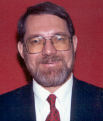|
 The
recently appointed Commission for the Revision of the Rules of
Professional Conduct will soon decide whether California should
pattern its Rules of Professional Conduct after the ABA's Model
Rules of Professional Conduct [the Model Rules], or whether California
should continue to go its own way with a unique set of professional
responsibility rules. I believe that it is very important that
California adopt the Model Rules, with appropriate changes where
California has strong reasons for variations from the ABA model. The
recently appointed Commission for the Revision of the Rules of
Professional Conduct will soon decide whether California should
pattern its Rules of Professional Conduct after the ABA's Model
Rules of Professional Conduct [the Model Rules], or whether California
should continue to go its own way with a unique set of professional
responsibility rules. I believe that it is very important that
California adopt the Model Rules, with appropriate changes where
California has strong reasons for variations from the ABA model.
The ABA has just adopted a substantial set of
amendments to the Model Rules, based on recommendations by its Ethics
2000 Commission and input from bar associations throughout the
country. California's bar associations worked closely together and
presented a united California perspective on the revisions.
California should not adopt all of the details of
the ABA Model Rules. However,
it should adopt the Model Rule format, with appropriate modifications
to reflect important differences in California's attorney conduct
rules.
There are a number of reasons why California
should align its rules of conduct much more closely with the ABA Model
Rules. The practice of law in California has strong ties to the
practice of law in the rest of the United States, where the Model
Rules are the dominant source of professional standards. There are
only a handful of states that have not adopted the Model Rules (with
appropriate modifications), and the number of such states is rapidly
dwindling.
Many California lawyers practice in multistate
law firms, where they frequently work on interstate or out-of-state
matters, and their non-California colleagues are usually subject to a
version of the Model Rules. In
addition, a very large number of California lawyers regularly do work
in other states where they may be subject to the Model Rules.
Further-more, many non-California lawyers legitimately do work where
they may be subject to the California rules. It is difficult and
cumbersome to keep track of two sets of rules and to determine which
set applies in a particular context. In contrast, if California has
substantially the same rules as other states, these problems are
minimized.
Having a set of rules with a different format is
confusing both to California lawyers and to non-California lawyers.
For California lawyers, it is confusing to find the applicable rule
when the lawyer is working on a matter (whether inside or outside of
California) where another state's professional responsibility rule
applies. Equally, it is
confusing to a non- California lawyer who is working on a matter for
which the California rules apply. Because of the different format, it
is difficult to find the appropriate applicable rule: a similar format
would permit both California and non-California lawyers to find the
applicable rules easily.
There is no question that the current California
Rules of Professional Conduct have important differences from the
Model Rules and these differences should be preserved in adopting the
ABA format. For the most part, a different California policy can be
articulated by modifying the appropriate Model Rule.
However, California should not modify an ABA
Model Rule solely because we think that we can draft the rule better.
For each such modification we should ask, "does this modification
reflect an important issue on which California thinks differently from
the ABA?" Unless we have an affirmative answer to that question, we
should adopt the text of the ABA model.
There are some ABA Model Rules for which there is
no California counterpart, because California has strong policy
reasons for declining to adopt them. For example, California has no
rule corresponding to Rule 8.3(a), which requires an attorney to
report to the disciplinary authorities any non-confidential
information that another attorney has violated a rule that raises a
substantial question as to that lawyer's honesty, trustworthiness or
fitness as a lawyer. In this circumstance, California should simply
decline to adopt the rule.
There are other ABA Model Rules for which
California has no counterpart simply because California has not gotten
around to adopting such a rule. For example, California case law has
adopted Rule 1.10, even though it is not articulated in a California
rule. In these circumstances, California should adopt the ABA
versions, with suitable amendments if we have strong policy grounds
for making modifications.
In conclusion, it is time for California to steer
a course on attorney professional conduct rules closer to the United
States mainstream. By following the foregoing suggestions, California
can accomplish this while preserving the important differences between
the California rules and the ABA Model Rules. The interconnection
between law practice in California and the rest of the United States
increasingly requires that we take less of a different course on
professional responsibility. We can do this while still preserving
important differences in California policy. The Commission for the
Revision of the Rules of Professional Conduct should adopt these
proposals and point us in the right direction.
 Judge Samuel Bufford, a federal bankruptcy judge in Los Angeles, is
a member of the California coordinating committee on the ABA's
Ethics 2000 commission and chair of the Ethics 2000 liaison committee
of the Los Angeles County Bar Association.
Judge Samuel Bufford, a federal bankruptcy judge in Los Angeles, is
a member of the California coordinating committee on the ABA's
Ethics 2000 commission and chair of the Ethics 2000 liaison committee
of the Los Angeles County Bar Association.
|

